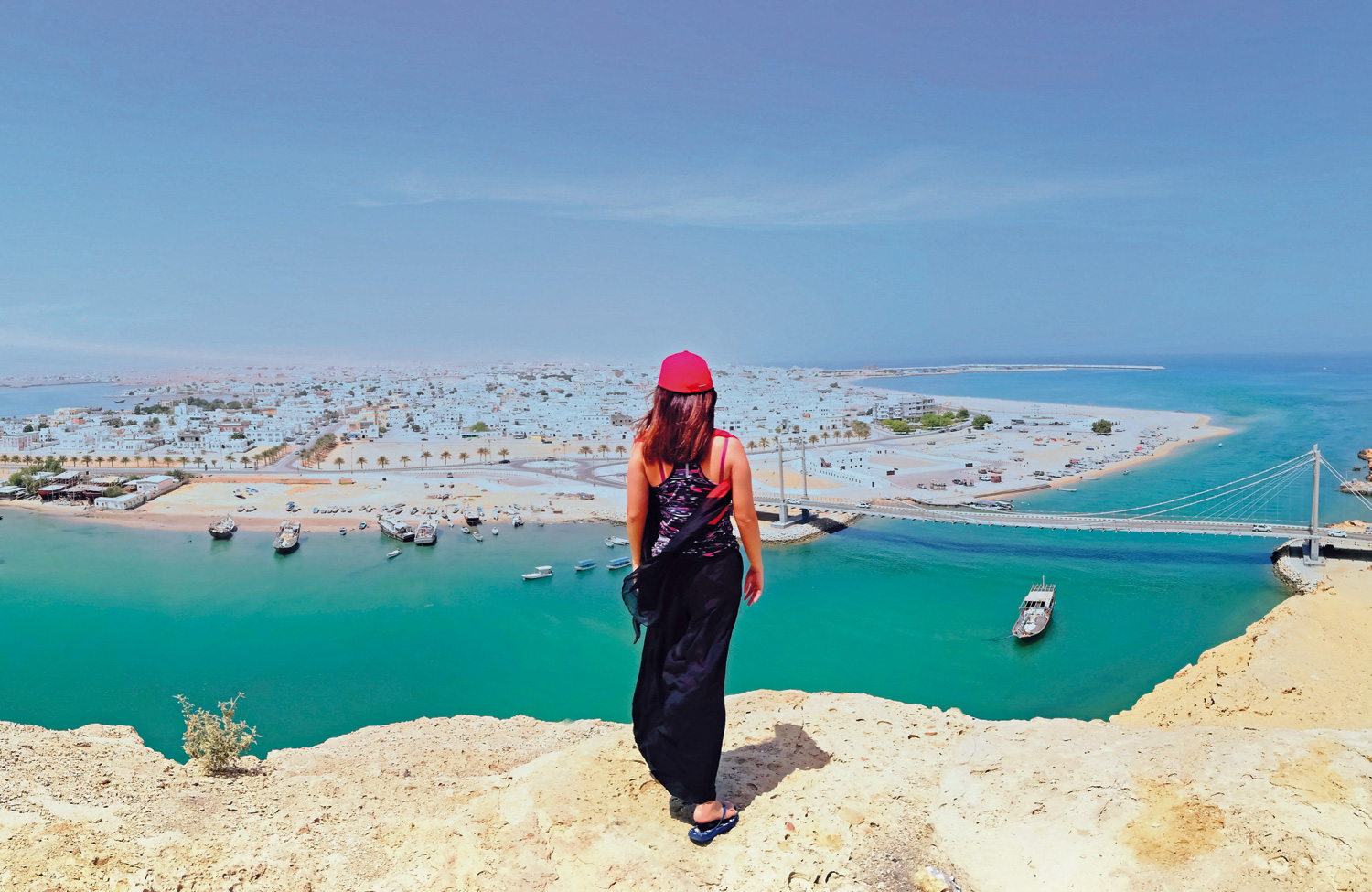

The city of Sur has its own old charm. The turquoise coastline, the magnificent lighthouse, the old castles, fishing villages, and the hanging bridge, are not only what makes this central coastal city of Oman a destination to behold. For several decades, it is the dhow and the dhow building yard that made the city of Sur iconic. The thunderous hammering and the screeching noise of machines curving out the minute details of these magnificent wooden sails keep the city connected to the age-old maritime tradition. The art of making this huge wooden vessel will take one sailing back to the historic times when construction was made to overcome the rough waters of the sea, to face uninvited storms and to transport heavy loads.
A massive effort goes into the making of these vessels, some can get to as large as 35 feet long and construction also varies from six months to almost a year. The Dhow, a sunset cruise that takes people from Marina Bandar heading towards Bandar Al Khairan, or make people experience the glide it takes along the azure ocean in Musandam, is something one should not miss. In fact, any dhow trip in Oman waters should never be missed. “Dhow cruise is all about understanding the flavours of Arab world. It helps people understand the age-old relation of individuals from this side of the world with the ocean. It takes them back to fables of Sindbad the Sailor,” shared Mohammed and Vishwa, who were busy sawing the rear part of a massive dhow under construction in Sur.
“A dhow trip is always cherished by the tourists as it gives them a good sense of the land — it shows them the prestige of the Omani topography,” they added. The dhow is not just a sail but a tale. With an enormous weight of above four hundred tonnes and a slender hull design and shape of a bow, the design can be traced back to its forefathers. Used in ancient times for trading and fishing purposes, it is a fisherman’s confidante as they sail through the rough waters of the Arabian Sea. A jewel of the ocean, dhow in modern time is no more a choice for pearl divers or merchants across the borders but is more of a tourist attraction either to go on a sail for game fishing, snorkelling, sunset watching or photo-shoot.
Once a major means of trade — dhows — have never lost its prominence even when trading is no longer its priority.
With no blueprints in hand and with thorough experience, dhow builders hammer, saw and shape these sails ensuring it never is and never will be a lost art.
Made up of Malaysian teak, African mahogany or coconut wood, with a few salient construction features like lateen and stitched construction, where the wooden planks are stitched to perfection, provides it with excellent control and easy sailing fitness.
The lateen sail which is triangular in shape has replaced the ancient cotton version and polyester fabric is used instead. Various modern versions have been introduced in recent times to lure tourists and other customers to keep the tradition sailing.
To know the significance and the the relationship of dhows with ancient Omanis, one need not to go far but visit the Maritime Museum of Sur which tell tales of its colourful past. The museum located just next to the dhow building yard holds a display of models which are recently replaced and rebuild to give the present a meaningful glance of the past.
Traditionally, dhows can be classified into two main types despite their varied forms and shapes.
Shu’ai is supposed to be known as the smallest of the dhows. Generally used for fishing activities, these boats had a stern area higher than the bow area.
Used for both fishing and commercial purposes during the ancient time, Boum is also a form of dhow which structure is quite different because its stern is tapering in shape and its overall structure is more symmetrical.
Some people also believe that the following are related or are influenced to the dhow:
Al Ghanjah — Easily distinguishable by its typical stem-head with trefoil crest, Al Ghanjah was formerly used in trading. With a capacity of 130 to 300 tonnes, these boats were built in Sur.
Houri Al Safeena — A small sailing boat used to send rescue teams for the stranded boats.
Houri for a crossing — Used mainly for ferrying passengers and also for transporting fresh water to the ships.
Houri for Fishing — Replaced by Launch Samak, this was once used for fishing and also transporting goods at short distances.
Al Mashouh — Light canoe used for ferrying sailors to the ship and back.
SWATI BASU DAS
axisswati@gmail.com
Oman Observer is now on the WhatsApp channel. Click here



